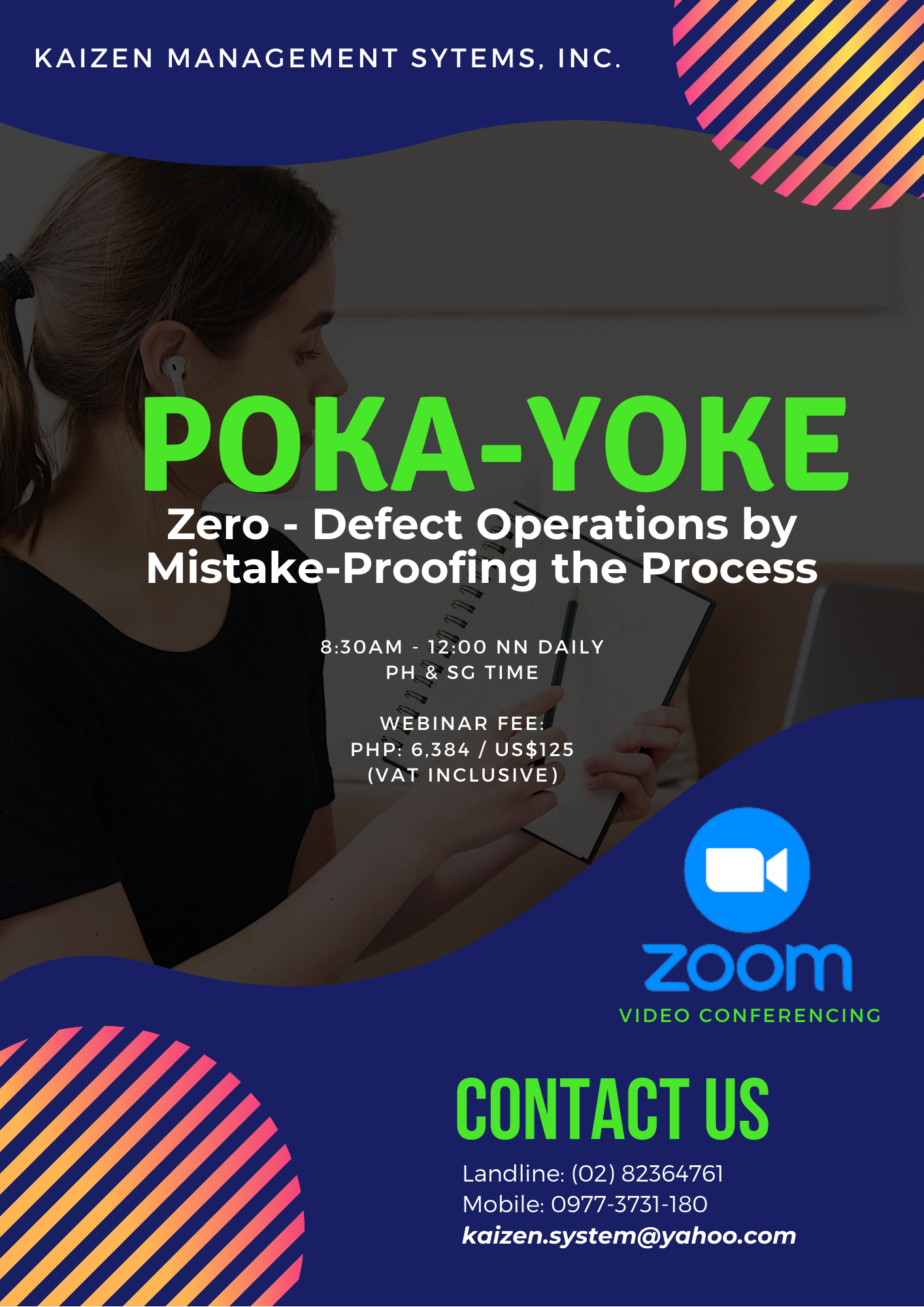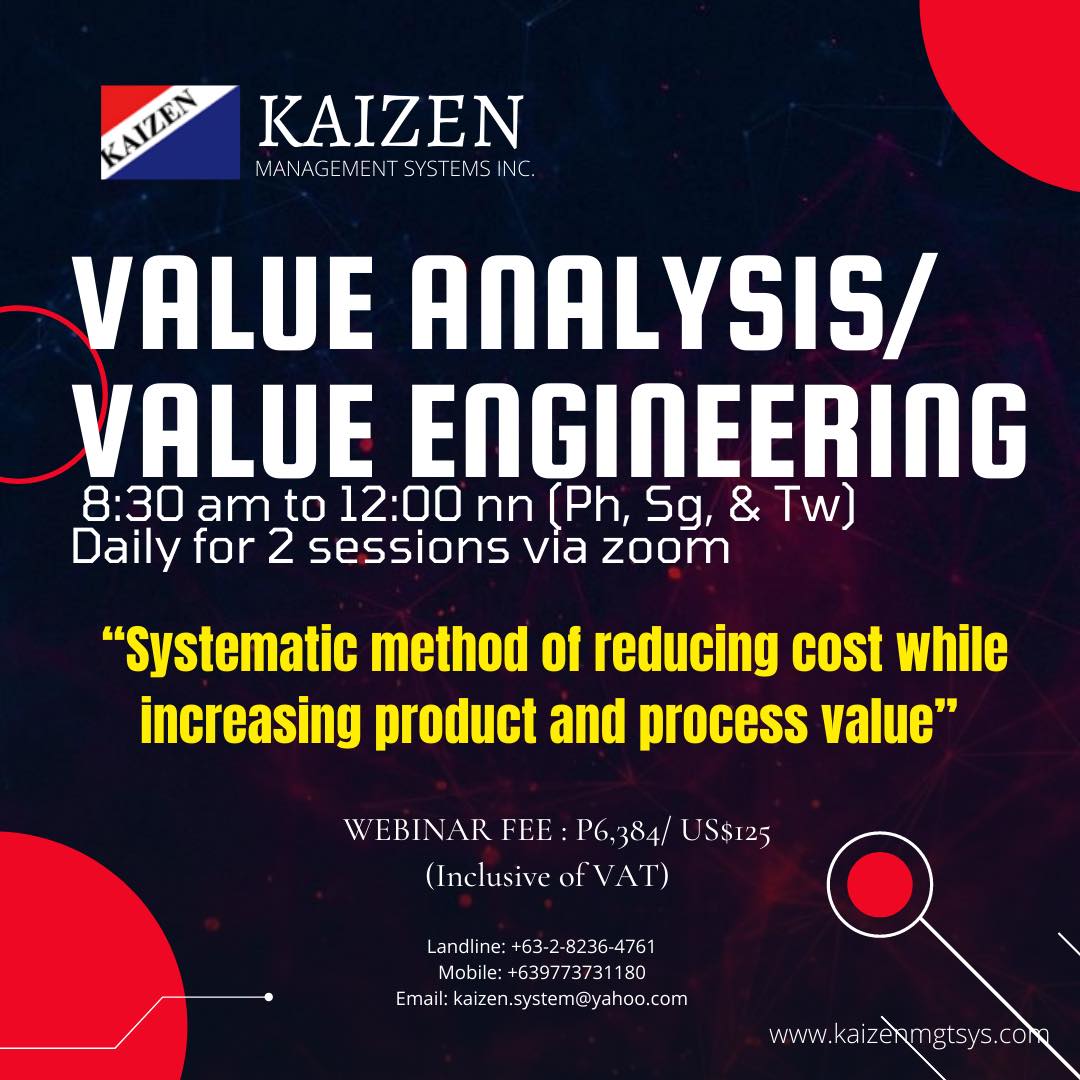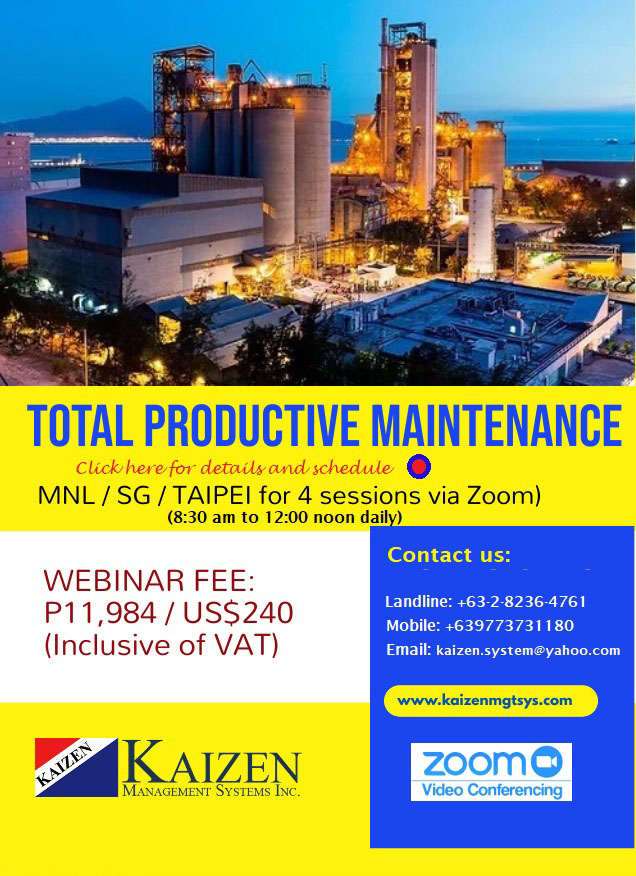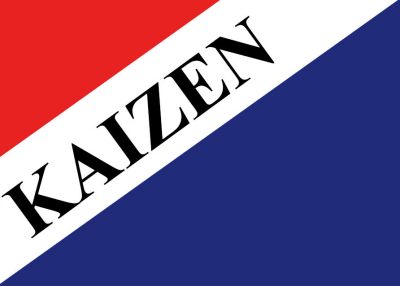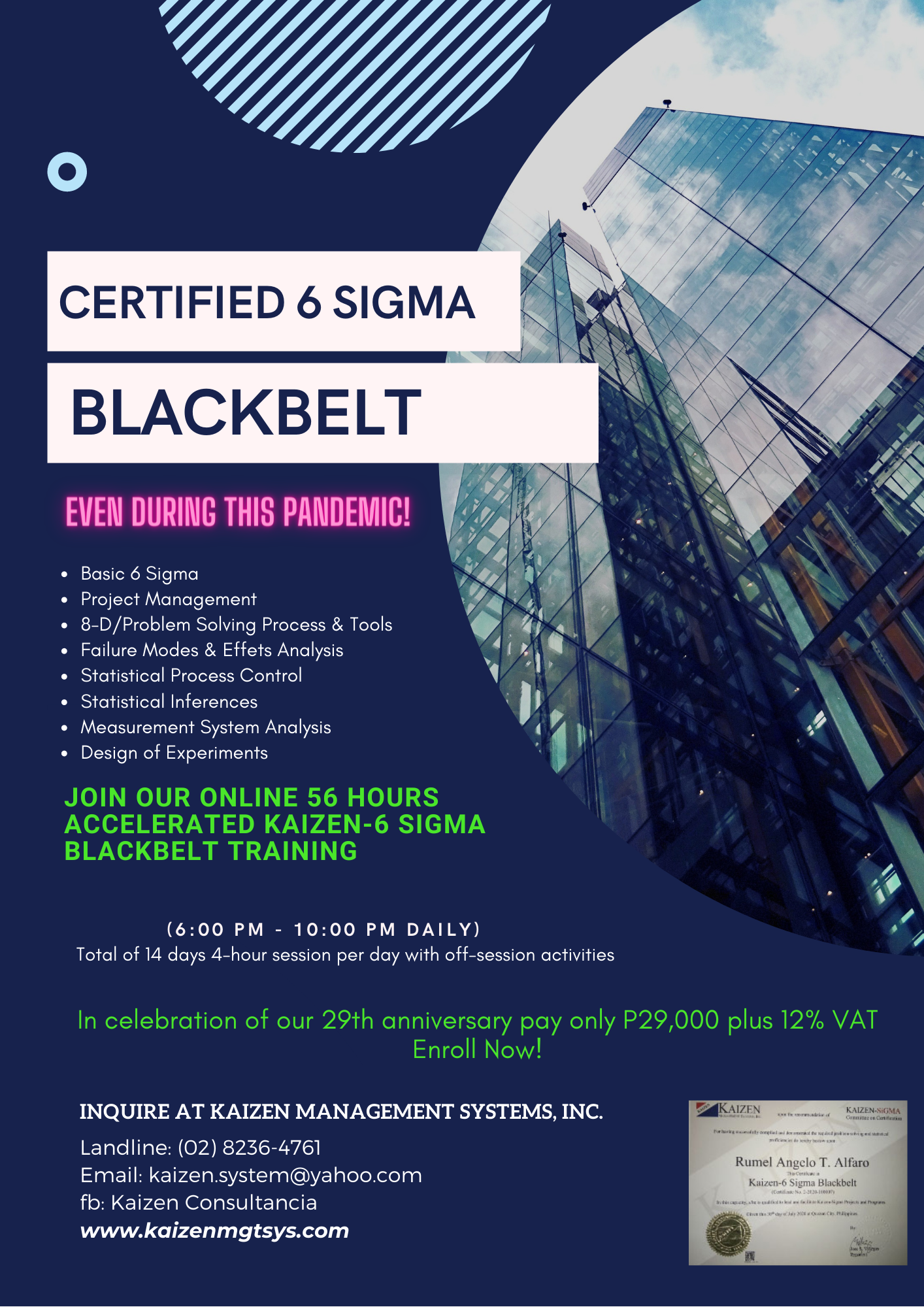By Enrico C. Mina
Organizations that want to make Kaizen or continuous improvement a way of life have to undertake a major cultural change. Such change is neither fast nor easy, and requires a step-by-step transition through five phases:
Phase 1: Decide – The senior management, led by the owner/general manager, company president, or CEO accepts the advantages and necessity of achieving competitiveness through continuous improvement of Quality, Cost, and Delivery (QCD) and agrees to lead and support the implementation effort, particularly by way of setting a good example. A decision is made to go ahead with the implementation.
Phase 2: Prepare – The decision to implement Kaizen is communicated to all levels of the organization, with an explanation of the reasons behind it. Usually, management creates a cross-functional Kaizen Committee (with membership from the pilot area engineers, supervisors, and workers) to prepare an appropriate set of standards or rules for continuous improvement in the pilot area and a detailed implementation plan. The Chairman of the Kaizen Committee is called the Kaizen Champion and is usually a very senior manager from operations, to drive home the message that continuous improvement is a high-priority concern of the company’s management. A consultant may be hired to train and advise the Committee members.
Phase 3: Launch – The launching is typically done through a special event that marks a significant milestone. Some organizations use a 5S Big Clean-up Day as a kick-off event, emphasizing that good housekeeping is the foundation discipline of continuous improvement.
Phase 4: Sustain – This phase requires the continual checkup of compliance with the Kaizen improvement targets and 5S standards and the development of a culture of cleanliness and orderliness in the workplace. Regular 5S audits are conducted by the Committee members; non-conformances are noted and the persons accountable for enforcing the standards are given feedback and deadlines for correcting these deviations. After the deadlines pass, the work areas with initial non-conformances are re-checked to ensure that the deviations originally noted are no longer present. The numerical results of the audits are visibly posted. Those with consistently high scores are given some form of reward and/or recognition. Those with erratic scores are given advice and assistance on how to make their improvements more consistent. Those with consistently low scores are asked to explain to the senior management why they are failing. At the same time, pilot cross-functional process improvement teams, composed of representatives of all involved units, are organized, trained, and empowered to analyze and solve long-standing, serious problems that adversely impact on external and internal customer satisfaction and on company competitiveness and profitability.
Phase 5: Expand – This last phase is concerned with modifying plans, if necessary, considering the lessons learned from the pilot area. The Kaizenprinciples and practices should be expanded to other organizational units such as other production areas, the warehouses, and the offices. Everyone understands and accepts the need to maintain a high level of cleanliness and orderliness, to assure QCD through improvement of processes, to enhance safety, to reduce material losses and damages, and to detect equipment problems early.
Production Process Improvement. – A process is a planned series of activities that predictably (i.e., not based on chance or “luck”) transform inputs into desirable outputs. All work in an organization is done through processes. There is a very strong cause-and-effect relationship between what happens during a process and the kind of results that come out of it. Thus, any attempt to improve problematic outputs (whether products or services) must start with an improvement of the process. These problems may include quality defects, failure to comply consistently with the customer’s delivery requirements, high costs with no clear benefits to the organization, accidents, and others.
t is essential to adopt a systematic data-based methodology for defining, analyzing, and solving the problem. Data has to be gathered on the dimensions of the problem: its nature, the process steps affected, the location of occurrence, the timing and frequency of occurrence, its magnitude and growth trend, and the sequence of activities that led to its creation. Based on these data, the problem can be defined very precisely. The personnel involved have to identify the most probable causes of the problem and to again generate data that would point to the most critical or principal root causes. The root causes can come only from one or more of the following six process elements, which interact with one another in the process system. If anything goes wrong with any of them, either singly or in combination with the others, a problem occurs:
- Man (personnel) – This refers to the human resources (e.g., operators and staff) performing work within the process. Problems can arise from lack of the required skill or competency, absenteeism, illness, physical condition that is inappropriate for the requirements of the job, inadequacy of personnel complement, lack of discipline in following standards, etc.
- Machines – This refers to the equipment, tooling, facilities, tools, vehicles, and other hardware involved in the process. Problems can arise from equipment failures, wrong settings, worn-out tooling, machinery inappropriate for the requirements of the job, lack of equipment capacity, etc.
- Materials – This means the raw materials, components, supplies, and other inputs consumed or transformed by the process. Problems can arise from sub-standard materials, inadequacy of material supply, wrong specifications, vendor unreliability, etc.
- Methods – This means the procedures, techniques, or work instructions that were actually followed during the operations of the process. Problems can arise from lack of procedural standards, outdated or obsolete procedures, incorrect procedures, wrong or missing process steps, etc.
- Measurement – This refers to the sensing, recording, analyzing, and reporting of measurable data from the process and comparing them to quantitative standards in order to maintain control over the process. If the data lie within the “normal” range specified by the standard, no action is taken. However, if the data lie outside this range, the operator has to take corrective and preventive action. Problems can arise if there is no measurement system at all, if the wrong parameters are being measured, if the measurement instruments are inappropriate or inaccurate, if the measurement feedback to the operator is delayed, etc.
- Environment – This refers to the physical conditions under which the process operates. Problems can arise from such things as congested space, poor layout of facilities and equipment, poor lighting conditions, too high or too low ambient temperatures, high sound or noise level, poor housekeeping, the presence of hazards, etc. The environment has a powerful impact on the quality of process operations.
Based on the root cause findings, the process improvement team members generate solution alternatives, evaluate each, select the best option, and prepare an implementation plan with action steps in the correct sequence, and for each step assign responsibility to specific persons, set target dates of completion, and define appropriate measurable indicators of success. Resources needed are also identified.
Many processes contain a lot of waste or non-value-adding activities (called muda in Japanese) that increase cost and cycle time but do not add to customer satisfaction. Non-value-adding process characteristics include excessive inventories of finished goods and work-in-process, unnecessary transportation and motion, waiting, overprocessing (or performing activities that do not add to customer benefit), and producing failures such as rejects. These normally abound in processes that have not been rigorously analyzed and improved.
These wastes must be identified and eliminated by simplifying or revising the process. Every non-value-adding activity removed from a process and prevented from recurring reduces cycle time and cost and improves quality and delivery reliability, often with very little investment. Most of the solutions involve one or more of the following approaches in the reduction of process waste: the reduction of process end-to-end cycle time through the reduction of transportation and motion distances within the process (which is accomplished through the re-layouting of the pilot area’s machinery and facilities), the simplification of the process through the elimination of non-value-adding activities and the combination of value-adding activities to reduce their number, the elimination or drastic reduction of waiting time, the reduction of work-in-process inventories and finished goods inventories, the improvement of the measurement system through the addition of appropriate equipment sensors and controls, and the adoption of mistake-proofing devices and procedures (called poka-yoke in Japanese) to reduce or eliminate human-caused errors.
The issue of plant re-layouting can be particularly difficult. The layout of the equipment and facilities in the SME’s plant has a significant impact on process efficiency, particularly on cycle time and the reduction of unnecessary transportation and motion. Inefficient layouts create unnecessary transportation and movement, which in turn increase cycle time and cost. However, layout and process flow revisions may be disruptive initially because operations may have to stop or slow down temporarily. But if they are properly done, the beneficial effects extend well into the future.
In many cases, the thorough implementation of 5S Housekeeping has a synergistic effect on productivity improvement; for example, in metal stamping operations, the setup time (the time needed for the installation of another set of toolings into a stamping press, during which period the press remained idle) is significantly reduced when the dies were properly organized with color-coding according to customer, labeled according to product and operational status, and stored in color-coded racks with column and row labels, with an accompanying tooling directory that identifies the specific rack, column, and row address of each die. The overall result is shorter machine idle time and greater output, with only minimal capital investments.


